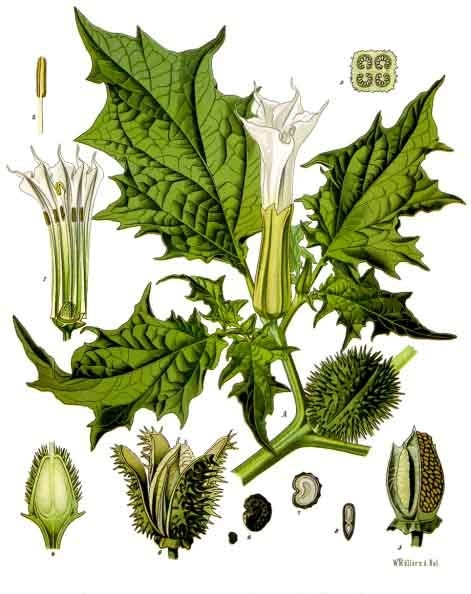 In order to maximise the scientific impact of Herbarium of the East India Company, Wallich enlisted the help of a network of European botanists to work on the material and publish their results. Some of these botanists were sent material in advance of the general distribution, and Wallich incorporated the plant names that they sent into the lithographed pages of the Wallich Catalogue. For example, De Candolle was sent Compositae (Asteraceae) and his ‘Compositae Numbers’ are given alongside the Wallich Catalogue numbers (sometimes causing some confusion).
In order to maximise the scientific impact of Herbarium of the East India Company, Wallich enlisted the help of a network of European botanists to work on the material and publish their results. Some of these botanists were sent material in advance of the general distribution, and Wallich incorporated the plant names that they sent into the lithographed pages of the Wallich Catalogue. For example, De Candolle was sent Compositae (Asteraceae) and his ‘Compositae Numbers’ are given alongside the Wallich Catalogue numbers (sometimes causing some confusion).
Christian Godfrey Nees von Esenbeck, Professor of Botany at University of Breslau, was sent Solanaceae (Acanthaceae and Lauraceae), which he included in his Monograph of the East Indian Solaneae (Transactions of the Linnean Society of London 1837[1834]: 37-77). The Solanaceae appear in the Wallich Catalogue on pages 80 to 82, and were distributed several years before Nees’s monograph with no mention of any information sent by Nees.
Nees sometimes refers in his monograph to a supplement of the Wallich Catalogue, for example when writing about Datura, the Thorn Apples genus, Nees cites ‘Wall. Catal. Suppl. n. 260’ after Datura alba Rumph. Wallich includes this species in his Catalogue as ‘Datura Metel Roxb.’ under Wall. Cat. 2639, but what is Nees referring to by a supplement?
Some people have referred to the second phase of the Wallichian Distribution, pages 269 to 306 sent out between 1847 and 1849, as the ‘Supplement’ to the Wallich Catalogue. But this was produced after Nees’s monograph, and the supplement reference numbers given by Nees do not match anything in the Wallich Catalogue. Furthermore, some references by Nees to ‘Wall. Catal. Suppl.’ are not accompanied by a number.
Nees refers to a supplement of the Wallich Catalogue several times in his monograph, but what he means by this is not yet clear. It maybe that Nees is referring to a numbered list of updated names which he later passed back to Wallich and expected to be sent out as a supplement or addenda to the Wallich Catalogue.
Robert Watson (Santa Cruz, California) recently drew my attention to the situation, and we would be pleased to hear from anyone who can shed any light on this.
The main Wallich Catalogue project homepage gives background information on the Wallich Catalogue, and links to further explainatory pages as they are written.
